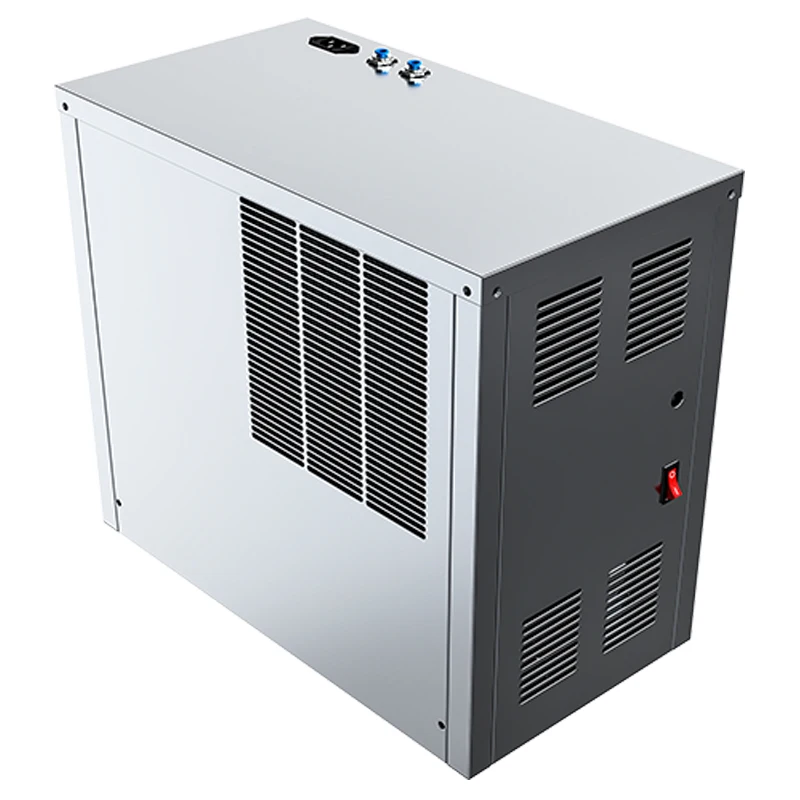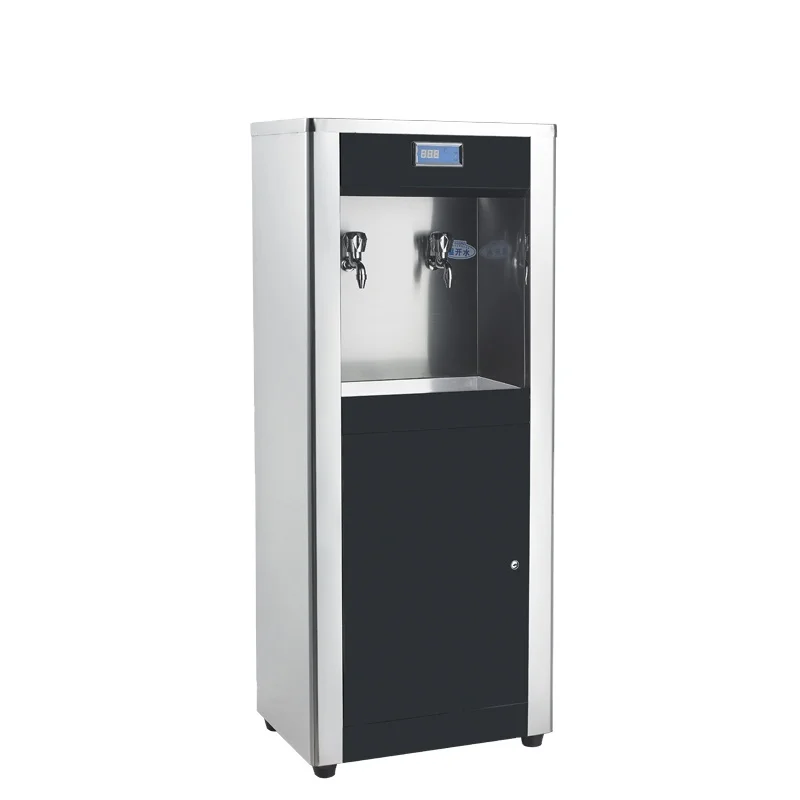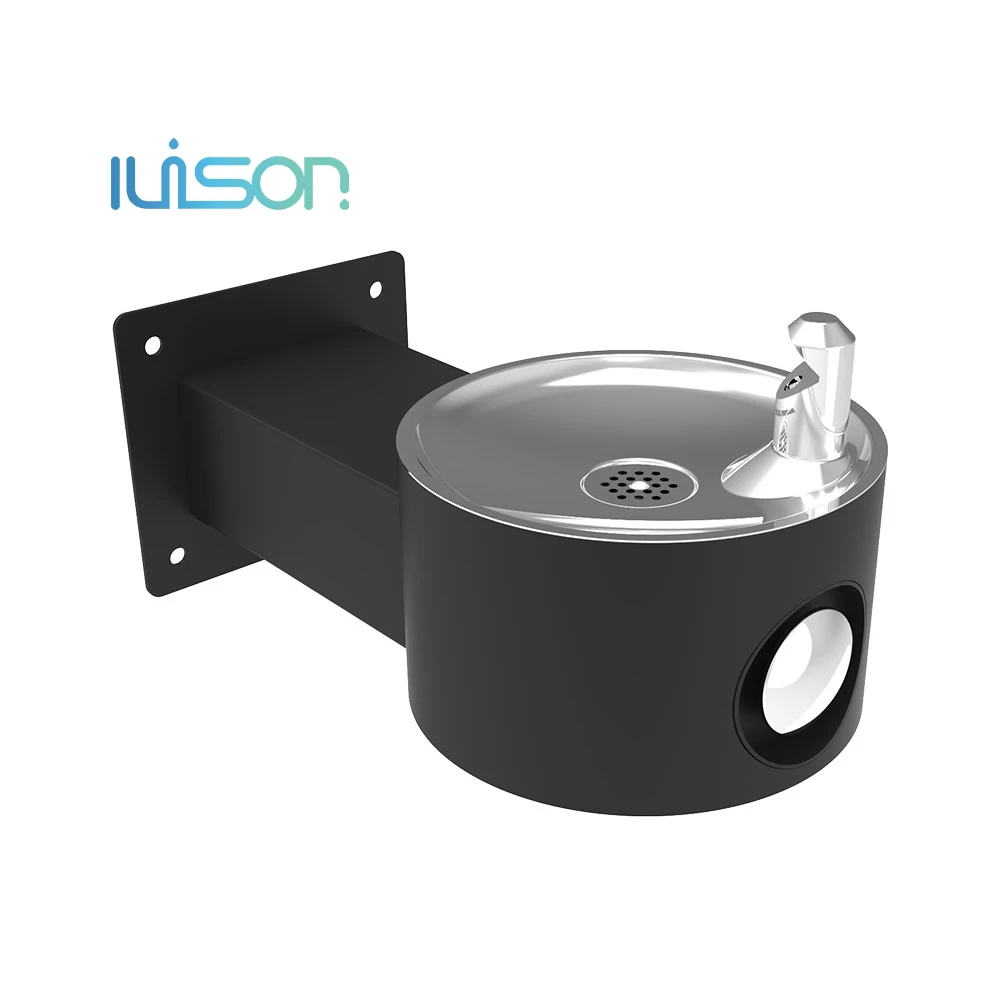Good insulation matters a lot for commercial water dispensers because it stops heat from getting inside and keeps the water cold. If the insulation isn't right, these machines have to work harder to cool down again after warming up, which means higher electricity bills over time. Most businesses go with either foam or polystyrene insulation since they actually do a decent job at stopping heat from moving through. According to some research from ASHRAE, better insulated units can save around 20% on energy costs, which makes sense when we think about how much money companies spend on running their equipment day after day. These kinds of savings really add up across all those dispensers sitting in office break rooms and restaurants throughout the country, so thermal efficiency should definitely be part of any serious discussion about designing new water dispensers.
Adding energy saving features to commercial water dispensers cuts down on power use when demand drops, like at night or during slow business hours. A lot of modern dispensers come equipped with programmable timers that let companies match their operation schedule to when customers actually need water, which makes better sense for energy management overall. The International Energy Agency did some research showing these kinds of settings can cut energy bills by around 30 percent in many cases. Beyond just saving money on electricity, this kind of tech actually makes a difference for environmental goals too. Less energy means lower carbon emissions from businesses running these units day after day.
When an appliance carries the ENERGY STAR® label, it means it meets tough energy efficiency standards established by the U.S. Environmental Protection Agency. Going with water dispensers that have this certification usually leads to better energy savings than just any regular model out there. Many companies who switched over to these ENERGY STAR® units noticed their monthly power bills went down while their day-to-day operations ran smoother. Take one big office complex for instance they saw about 15 percent less spent on electricity after upgrading their dispensers. That kind of savings adds up fast. Plus, picking these certified products helps cut down on greenhouse gases across the globe. So businesses get two good things out of this deal lower expenses at home and a smaller carbon footprint worldwide.
The introduction of smart temperature controls is changing how businesses manage their water dispensers, getting better results while using less power overall. These modern systems come equipped with sensors that tweak energy consumption on the fly depending on what's going on around them, which keeps things running smoothly without wasting resources. Many companies who switched to these smart systems are seeing real benefits both in terms of performance and wallet health. Some actual numbers from field tests show energy bills dropping by around 25% after installing these sensor driven temperature management solutions. Going green isn't just good for the planet anymore it makes financial sense too, especially when water dispensers can maintain proper function levels without guzzling electricity like they used to.
Cold water dispensers that focus on energy efficiency can really bring down those kWh numbers, which means lower bills for companies running them day after day. The newer models actually incorporate smarter cooling systems that just don't guzzle power like older versions did. Take a look at what happens when offices upgrade their old dispensers: some have seen their annual energy expenses drop by around 30%. According to various market analyses, these savings pile up over time as the dispenser sits there doing its job month after month. So while the upfront cost might seem steep, most businesses find themselves saving money in the long run. Plus, cutting back on electricity use isn't just good for the bottom line it helps reduce carbon footprints too, something many companies want to emphasize these days as sustainability becomes increasingly important across industries.
Green coolant tech is making a real difference when it comes to water dispensers going greener. Instead of traditional coolants that heat up the planet, these new systems work with refrigerants that have much lower global warming potential (GWP). They still keep things cold but leave a smaller mark on our environment. Take R-600a for example this stuff shows up in lots of modern eco-friendly dispensers because it's actually kinder to Mother Earth. Research indicates switching to these eco coolants cuts down carbon emissions significantly across commercial refrigeration setups, something that fits right into what governments around the world are pushing for environmentally. Companies looking to stay ahead of the curve find themselves adopting these technologies not just to please customers wanting greener options but also to stay within those ever tightening environmental rules most industries face nowadays.
Water dispensing systems that save energy help businesses stay within the bounds of strict local and national energy laws. Cities across the country have put in place minimum efficiency requirements for commercial equipment, and failure to meet them can lead to hefty fines while missing out on valuable rebate programs. When companies follow these rules, they dodge those penalty checks and often pocket thousands back through government incentives. Building managers know this well because most municipalities now require proof of energy performance before issuing occupancy permits. Going green isn't just good for the planet anymore it makes financial sense too. Companies that tick all the boxes on their energy certifications tend to attract clients who care about environmental responsibility, giving them an edge over competitors still stuck in old ways of doing things.
Water dispensers that save energy usually come with fancy filters that make the water better, which helps people stay healthy and work better at offices and other businesses. Most modern systems have these cool filtration methods like reverse osmosis or UV light treatment to get rid of stuff we don't want in our drinking water. When workers actually drink good quality water throughout the day, they tend to feel better and perform better too. Hydration matters a lot for how we function during long days at work. From what many companies have found out through experience, when they invest in proper water filtration, their customers notice the difference. People appreciate having access to clean, great tasting water, so businesses see happier customers and staff members who are more satisfied with their workplace amenities.
Water coolers installed under sinks save tons of space, especially helpful in kitchens or offices where every inch counts. The design fits right underneath countertops without taking up valuable floor area, yet people can still get cold drinks whenever they want. One thing worth mentioning is the eco mode feature that cuts down on electricity when not much water is being used, so bills stay lower over time. Stainless steel versions stand out because they last forever and don't rust or wear down easily. Most folks who care about getting something durable and efficient end up going for these models despite the higher price tag upfront.

Schools love dual temperature drinking fountains because everyone has different drink preferences these days. The units give access to both hot and cold water at the same time, which means no waiting around for someone else's beverage choice. Most models come made from solid stainless steel so they last forever and don't need much fixing up over time. Schools care a lot about keeping things clean too, so manufacturers added antimicrobial surfaces plus filters that actually work pretty well. Administrators report that teachers and kids appreciate having both temperatures available. Plus there's less plastic bottle trash accumulating since people can just fill their own containers whenever thirsty. This fits right into most districts' green initiatives while saving money on bottled drinks long term.

Wall mounted drinking fountains work really well in places where lots of people come and go, fitting right onto walls so they don't take up any floor space at all. These modern systems have sensors built in that know when someone wants water and only dispense what's needed, which saves electricity and cuts down on wasted water. The tech inside actually changes how it runs based on how busy the area is, using less power when nobody's around. People who install them often mention how happy customers are with these units because they're so efficient and easy to reach. Schools and office buildings especially love this setup since everyone can grab a drink quickly without having to hunt around for a free spot on the floor.

Changing filters on time really matters for keeping water clean and making sure commercial cold water dispensers run efficiently. When filters get clogged or dirty, they do more than just mess up the taste of the water. The dispenser actually has to work much harder, which eats up more electricity and can shorten how long the machine lasts before needing repairs. Most manufacturers suggest looking at those filters roughly every three to six months, though busy locations might need more frequent checks. Industry pros usually advise creating some kind of tracking system or calendar alerts so nobody forgets when it's time for a replacement. Getting into this routine makes all the difference in the long run. Clean filters mean better tasting water, lower energy bills, and fewer unexpected breakdowns during peak hours when customers need access most.
Keeping condenser coils clean makes all the difference in how well water dispensers actually work. When these coils get dirty over time, they start costing more money on electricity bills and create problems because air can't flow properly through them anymore. The heat exchange just doesn't happen right either. To keep things running good, most folks grab a special brush made for coils along with something mild like dish soap to wipe away all that built up grime and dust particles. Some companies hire pros to handle this maintenance since professionals know exactly what spots need extra attention. But plenty of people manage it themselves too, especially after reading through those manuals from the manufacturer carefully first. Dirty coils really eat into savings long term though, so spending that time cleaning them every few months pays off handsomely in both reduced costs and longer lasting equipment.
Keeping track of how much water flows through commercial dispensers and making adjustments when needed is crucial for keeping these systems running efficiently while avoiding wasted water. Newer tech allows for constant monitoring of flow rates so operators can tweak settings fast without wasting extra power. Places like cafes and office buildings have seen better performance after installing this sort of system, typically featuring sensors that automatically change settings based on how people actually use the machines throughout the day. The ability to monitor things as they happen makes it easier to spot problems before they get worse, giving business owners a clearer picture of what's going on with their water usage. This kind of insight lets them fix issues early rather than dealing with bigger problems down the road.
Adding IoT tech to commercial water coolers is changing the game for how businesses track their water usage. With these smart systems, companies get instant notifications about things like wasted water, possible leaks, or when maintenance is needed so the coolers keep running smoothly. Take filter changes for example many IoT systems will actually send alerts when filters need replacing or spot strange spikes in water consumption that might indicate problems down the line. This helps cut back on waste and saves money in the long run. A number of office buildings and restaurants across the country have already adopted this technology and seen real improvements in their daily operations. The move toward these intelligent water cooling solutions reflects a broader shift in the market where businesses want equipment that does double duty saving both resources and money while still meeting sustainability goals.
New heat exchange tech is making a real difference when it comes to how efficiently commercial water coolers use energy. The way these systems work is pretty simple actually they manage heat transfer much better than older models, which means less power is needed to keep water at the right temperature. According to industry reports, companies that switch to heat exchange systems often see their energy bills drop significantly over time. We've seen this happen in practice too many office buildings have started installing these advanced coolers and dispensers, cutting down on their carbon footprint while still keeping staff happy with cold drinks. Beyond just saving money on electricity, this kind of technology helps businesses meet those ever-tightening environmental standards too, something that matters a lot to customers who care about green practices nowadays.
Ceramic filtration is becoming increasingly common in today's water dispensers because it works really well at purifying water. People are turning to ceramic filters mainly because they clean water better than most other methods on the market right now. Research from various labs shows these ceramic filters knock out bacteria, viruses, and all sorts of nasty stuff that makes water unsafe to drink. What makes ceramic so appealing? For starters, these filters last longer than many alternatives. They're also pretty easy to take care of and don't need replacing as often. Plus, they catch a wide range of contaminants that would slip through other types of filters. Many companies in the food service and healthcare industries have already made the switch to ceramic technology for their dispensers. As more businesses prioritize clean drinking water for employees and customers alike, we're seeing a real transformation happening across commercial water systems throughout the country.